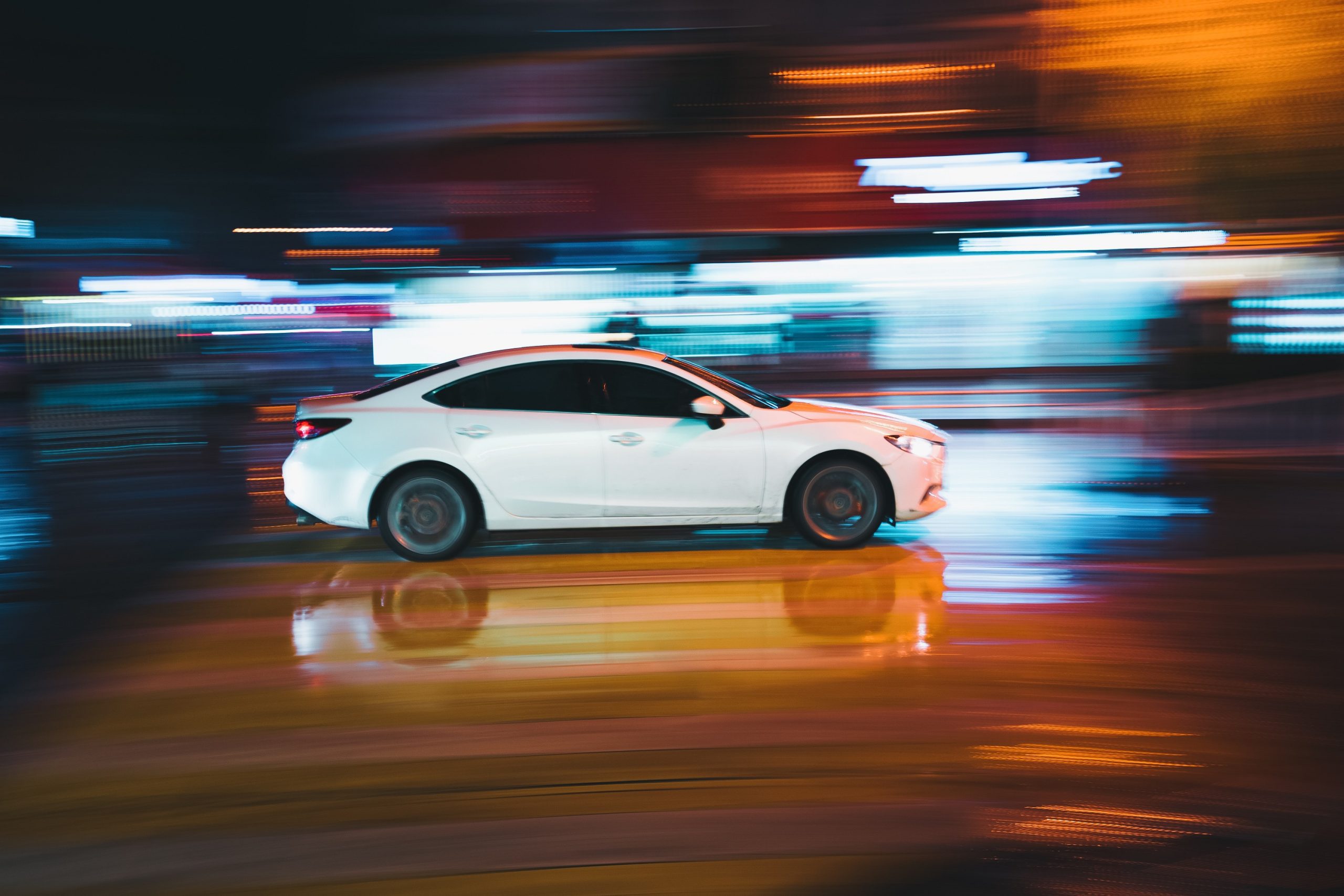It is a tough nut to crack. Give people car technology that should make driving safer and they’ll take more risks, annulling part of the safety advantage.
Drivers have been found to drive at higher speeds on well-lit roads than on reference roads without lighting. (Photo: Alession Lin / Unsplash)
For his PhD research, Timo Melman of the Cognitive Robotics department, tries to tackle this behavioural adaptation problem.
Accident rates with cars have tumbled since the seventies. Safety belts, better brakes, crash barriers along highways, technology and road infrastructure have proven life-saving. But safety could increase much more if drivers would not tend to drive faster when supported by technology.
Drivers have been found to drive at higher speeds on well-lit roads than on reference roads without lighting, thereby partially negating the potential attainable safety benefits. Equally, drivers with assistance brake system (ABS) tend to reduce the space between them and the vehicle in front.
“There are several reasons why the determinants of speed adaptation need to be understood,” Melman writes in his paper ‘What determines drivers’ speed? A replication of three behavioural adaptation experiments in a single driving simulator study’, which was recently published in the journal Ergonomics.
‘We need to strike a more favourable balance’
“First, a good understanding is important for designing effective educational and enforcement measures. Second, knowledge about speed adaptation may benefit the design of new advanced driver-assistance systems to strike a more favourable balance between technology mediated safety improvement and motivationally inspired consumption of the offered safety.”
How fast we drive is partially determined by fear. Or so say the proponents of the risk homeostasis theory. This theory dates from the early sixties when scientist demonstrated that drivers regulate their anxiety levels. The researchers measured the sweat production and used that as a proxy for fear. Their experiments showed that drivers adjusted their speeds so that the apparent accident risk, as indicated by their rate of sweat production, remained constant whatever the conditions. Other studies concluded that we adjust our speed according to the time it takes for the vehicle to cross the lane markers if holding the steering wheel in a steady position at the same speed, or according to the experienced task difficulty.
“These three studies have been very influential in traffic safety research,” says Melman. “Indirectly, they may have put their mark on road safety policies, since many scientific papers, including modern ones, refer to them.”
These studies are very old. And they have always been separately studied but never compared in a single experiment, to determine which theory best explains speed adaptations. Melman set out to investigate which of the theories is best. He developed a simulation environment in which a panel of twenty-four guinea pigs were exposed to many different road situations. Winding roads, narrowing lanes etc. How did the different situations affect the speed and anxiety levels of the participants? He also measured the force with which the participants had to pull at the steering wheel.
The Delft insights could also prove useful in developing automatic cars
“It was difficult to compare the studies in a systematic way”, says Melman. “I believe that a model that combines many different factors could turn out to be better than the old ones that look at the outcomes separately. One measure that proved very constant throughout the experiments was steering activity.” Melman is now continuing his work at Renault, which is partially funding his PhD research.
The Delft insights could also prove useful in developing automatic cars. Anxiety is an important factor here as well. Automatic cars themselves now decide on safe speeds and distances. But this doesn’t mean by definition that the occupants feel safe and comfortable. Melman refers to a lecture he recently attended in which a video was shown of an automatic car driving at full speed through a very narrow tunnel in Rome. “The car had calculated that it could drive through. The occupants experienced the fright of their lives. It just shows that we need to take anxiety into consideration even in automatic cars.”
Melman, T., Abbink, D. A., Van Paassen, M. M., Boer, E. R., & De Winter, J. C. F. (2018). What determines drivers’ speed? A replication of three behavioural adaptation experiments in a single driving simulator study. Ergonomics.
Melman, T., De Winter, J. C. F., & Abbink, D. A. (2017). Does haptic steering guidance instigate speeding? A driving simulator study into causes and remedies. Accident Analysis and Prevention, 98, 372–387.



Comments are closed.